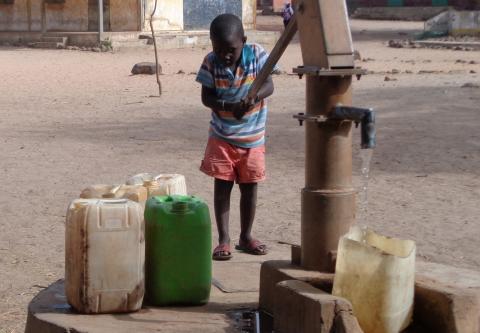
- Insights from new IDEV evaluations
- Bank delivering on its commitments, but concerns raised on ensuring they are fully implemented
- Evaluation vital for Mid-Term Review of ADF-13 and next replenishment
The African Development Bank (AfDB) delivers on its commitments; produces important documents, tools, and structures; and launches initiatives, but attention needs to focus also on full implementation according to three new evaluations from Independent Development Evaluation (IDEV).
On May 27, 2010, the Board of Governors of the Bank approved the Sixth General Capital Increase (GCI-VI). In the same year, the discussions on the Twelfth replenishment of the concessional window of the Bank Group, the African Development Fund (ADF), concluded, covering the period 2011-2013. Three years later, the ADF-13 replenishment was agreed. The current ADF cycle (ADF-13) covers the years 2014-2016.
These capital increase and replenishment processes between the Bank and its shareholders (in the case of the GCI) and the Bank Group and its ADF contributors (in the case of the ADF) were tied to certain commitments. These commitments were generally aimed at strengthening the strategic focus, development effectiveness, and efficiency of the Bank Group to help it remain relevant and competitive in the years ahead.
The first of the three new evaluations, the Overarching Review, seeks to assess whether the commitments are being implemented fully and effectively. It distinguishes between “delivery”, such as producing an agreed document, and full “implementation” in practice. On delivery, the picture is largely positive, despite some delays. On implementation the journey is still ongoing.
“We have seen that the AfDB is an organization on the move. What we are questioning is how close it is to its destination. The Bank has initiated reforms and produced an impressive range of guiding documents. The ongoing challenge is in putting all these things into practice and quickly getting the organization to where it needs to be – that is, a leading driver in Africa’s development race,” explains the Evaluator General, Rakesh Nangia.
Findings of the evaluations also informed the Mid-Term Review of ADF-13, which took place in Abidjan from November 11-13, 2015.
In addition to the overarching review, IDEV conducted in-depth reviews and provided recommendations on two strategic areas of the ADF process: policy and strategy making and implementation and administrative budget management.
With respect to policy and strategy making and implementation, the evaluation concludes:
- The policy and strategy suites and individual documents were generally found to be relevant, with some variability with regards to quality, despite a solid base. However, the suite of guiding documents for the Bank as a whole is in need of review – to ensure it is streamlined and up-to-date.
- The biggest challenge is ensuring effective implementation of the policies and strategies to drive the Bank’s activities and operations.
- Shortfalls in support constrain the Bank’s ability to ensure effective implementation.
Regarding administrative budget management, the evaluation finds that:
- The budget reform was, by design, relevant and to a great extent articulated and integrated with other components of the Bank’s reforms.
- Budget reform is still work in progress.
- Budget tools have been enhanced, but further fine-tuning is needed.
- Behavioural changes required for effective implementation of reform were not adequately addressed.
- The budget reform has had limited effect on the efficiency of key budget processes.
What is the ADF?
The African Development Fund (ADF) is the concessional window of the AfDB Group. Established in 1972, it became operational in 1974. Administered by the African Development Bank, it comprises, to date, 27 contributing countries and benefits 40 countries. The 40 ADF-eligible countries include those that are increasing their economic capacities and heading toward becoming the new emerging markets – as well as those that remain fragile and need special assistance for basic levels of service delivery.
The legal agreement establishing the ADF designates the Board of Governors as the Fund’s highest policy-making organ. The ADF Board of Directors includes seven Executive Directors representing donor countries (the Executive Directors are nominated by their constituencies) and seven Executive Directors representing AfDB. The Board oversees the Fund’s general operations. The Fund’s resources consist of contributions from internal Bank resources and periodic replenishments by contributing countries, usually on a three-year basis. In the replenishment discussions, the contributing countries are represented by their ADF Deputies.

